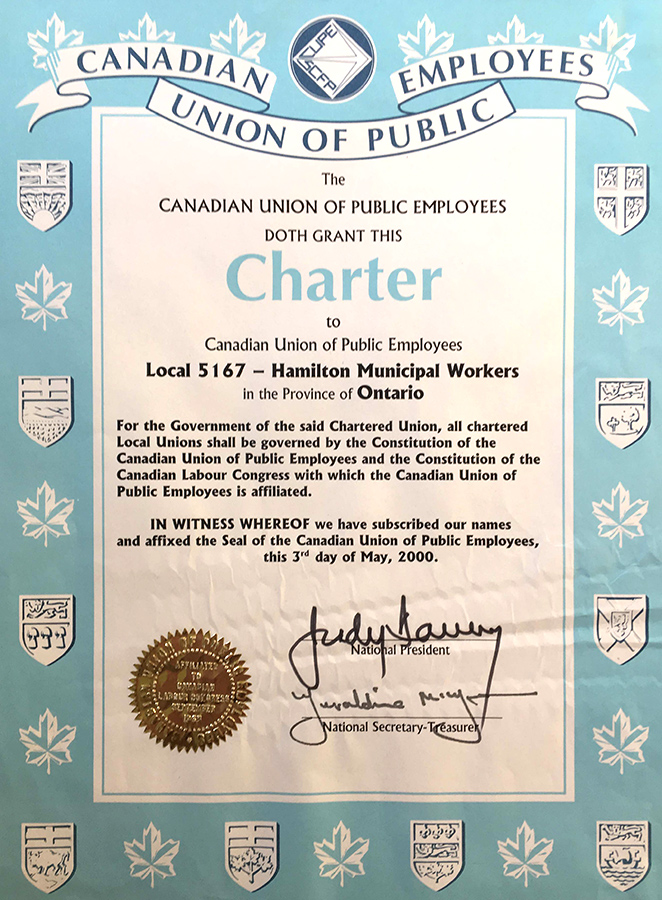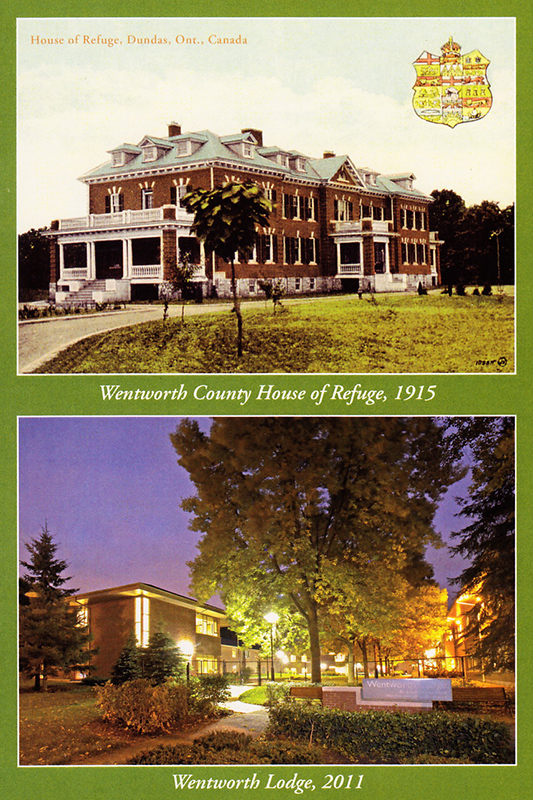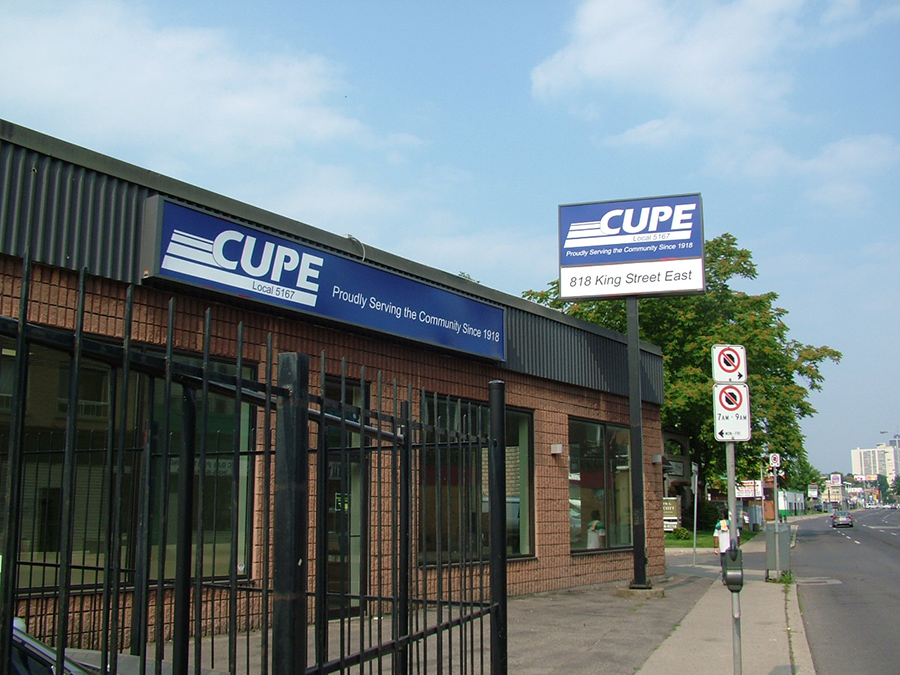The New Century
Changes and Challenges
The new century brought both significant changes and challenges to the Locals.
The long-planned merger between Locals 5 and 167 finally happened in early 2000. But economic challenges lingered after the amalgamation of greater Hamilton. And a global financial crisis that began in late 2007, triggered by the collapse of the mortgage and housing markets in the United States, began dragging Canada and much of the world into a recession.
“Local 5’s membership was shrinking. I don’t know if they approached our executive, or vice versa. But it was the only way to boost both Locals.”
– Al Peti, former Vice President, Local 5
The Merger
On May 3, 2000, CUPE Local 5 and Local 167 merged to form CUPE Local 5167. In September, Locals 1220, 1006, and 2064 also joined the new Local.
At first, Local 5167 operated as two still-separate Locals and maintained two offices. After a year, though, the membership voted to come together as one cohesive group. In January 2001, CUPE Local 9858 also joined Local 5167. CUPE Locals 1006, 1220, and 3488 (DARTS) voted to join a few years later.
Although the Locals had often worked together at the bargaining table in the past, the final push toward merger was the amalgamation. The province downloaded a number of key services, such as education and ambulance services. Workers in these sectors now fell under the city’s jurisdiction. Because of this important change, the Locals began to finally begin merging their memberships.

“The impetus for amalgamation was the Hamilton merger. CUPE realized at some point they’d have a representation vote amongst the different locals — 5, 167, the nurses, ATU, and OPSEU. So cooperation amongst those different locals had existed in the past, but in order to situate themselves well, it made more sense to amalgamate.”
– Peter Wickett, former Treasurer and Recording Secretary, Local 5
Challenges: Bill 136 and the “Super Union”
Gus Oliveira describes how Bill 136 forced many unions into representation votes.
The effects of amalgamation did not end in 2000. Through Bill 136, the Public Sector Transition Stability Act of 1997, the city’s 3,500 civic workers were forced into a representation vote. The Bill was an attempt by the province to create one massive union from the five that currently represented the city’s workers. Many school boards, hospitals, and municipalities across Ontario were also forced into these votes. As the Hamilton Spectator reported in September 2002, “Five unions are fighting it out for the loyalty and dues of 3,500 Hamilton municipal workers in what could be a hotly contested battle. The province’s labour board has ordered voting in November by civic workers to decide which union will bargain for them.”
Local 5167’s executive met with the other four civic unions to try to get ahead of the vote and work together on the best solution. But those talks quickly broke down.
Members began voting to decide on which union they wanted to represent them in late 2002. When the votes came in, the Amalgamated Transit Union (ATU) narrowly won: 1,260 votes to CUPE’s 1,217.
Although the Ontario Ministry of Labour oversaw the vote, it was clear that something had gone wrong. Local 5167 disputed the voting process and demanded another vote after reports about irregularities came to light. These included charges of double-voting and some members’ failure to show proper identification.
At first, the ministry and city officials resisted the calls for a new vote, although they did agree that there had been serious irregularities. Instead, the ministry asked the unions if they would like to settle things without another vote, and the unions agreed.
In the end, after a long process of negotiation, the super-union idea died. Local 5167 kept all of its members and gained the ATU’s clerical positions and Local 772’s rink positions, too.
Al Peti describes how the representation vote brought the issue of member dissatisfaction to the Local’s leadership.
Successes: Water Watch, Wentworth Lodge, and a Garbage Contest

Although the new century brought challenges, it also brought a number of important wins for Local 5167.
In 2003, the Local launched a successful campaign to stop the privatization of Wentworth Lodge. The Lodge’s residents’ council had joined forces with the Local to push back on the city’s recommendation that it be privatized. In four weeks, the Local collected more than 8,500 signatures on a petition to stop the privatization.
In 2004, the Local led a coalition of citizens, environmentalists, and labour activists to take back control of Hamilton’s water and wastewater systems from the private companies that had run it since 1994. In that year, Hamilton became the first major city in Canada to contract out water and wastewater treatment. The ten-year experiment was marked by controversy, bankruptcy, and raw sewage spills.
By November, the Water Watch Coalition was successful in getting city council to reverse its decision and resume operating the city’s water systems.
Also in 2004, the city proposed splitting waste collection services between the public and private sectors. Local 5167 took on the challenge, and over a three-year period provided better garbage collection services to Hamiltonians than did the private contractor. But the city chose to keep the private–public split.
Gus Oliveira talks about how Local 5 won the garbage contest.
The Dumping Probe
In November 2012, the city of Hamilton launched a probe into some of its outside workers. It accused the workers of corruption and using city vehicles for personal use by selling asphalt out of the backs of trucks and dumping it in a private asphalt company yard while charging for full days’ work. Thirty-two workers were investigated, and 29 were fired.
The media reported the incident as a blatant case of fraud and time-stealing. But the real story was quite different.
The city had begun using a new asphalt-recycling machine. The new machine took old asphalt off the roads and refashioned new material out of it that could be used to patch roads, instead of using new asphalt. But the workers quickly discovered that this recycled material did not work as well as the new asphalt. As a result, crews were regularly sent to purchase new asphalt from the plant.
In the meantime, the city had set up a task force to figure out why it had not seen any cost savings after buying the machine. The insinuation was that a “kick-back” scheme was going on: The workers were dumping the recycled asphalt, then buying it from the plant for payment.
In the end, the confusion, investigation, and terminations were devastating. The Local spent many years grieving the firings and demanding that the workers be rehired. Eventually, most of the fired workers were awarded their jobs back in mid-2015. But it was a long process of arbitration that included years of hearings. A second phase of hearings demanding damages was also launched following libelous comments by city councillors and the media.
A New Office
As Local 5167 grew, it outgrew its office space on Hunter Street. In 2007, the Local’s executive began the process of buying its own office building. Three years later, it purchased a former car dealership at 818 King Street East in Hamilton, and set about doing significant renovations. The Local moved into its new offices in June 2010.
“We bought this building and converted it from a repair garage to an office building. We moved into it in June 2010. I would run back and forth between there and the GO station when I had the time to see what was happening and ask the contractors questions. There was lots of work to do because it had been a repair garage and before that, a car dealership, and so there were a lot of contaminants to clean up. But we ended up with a really great space.”
– Al Peti, former Vice President, Local 5

Paula Masys-Pollock talks about Local 5167’s presence in the community, and its engagement with members and the general public.
Timeline
*bold events on the timeline are specific to Local 5167


